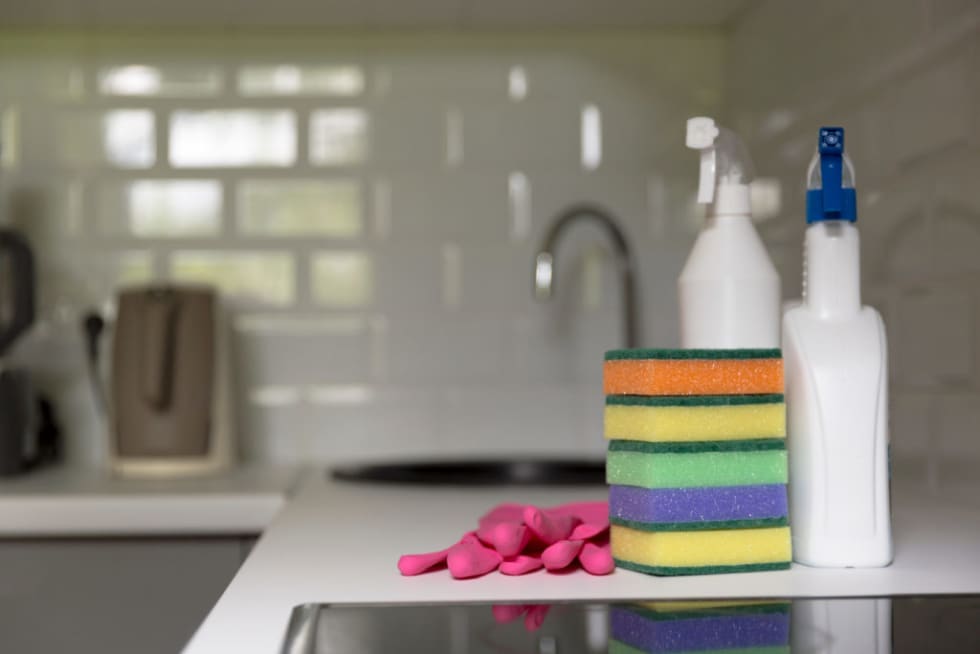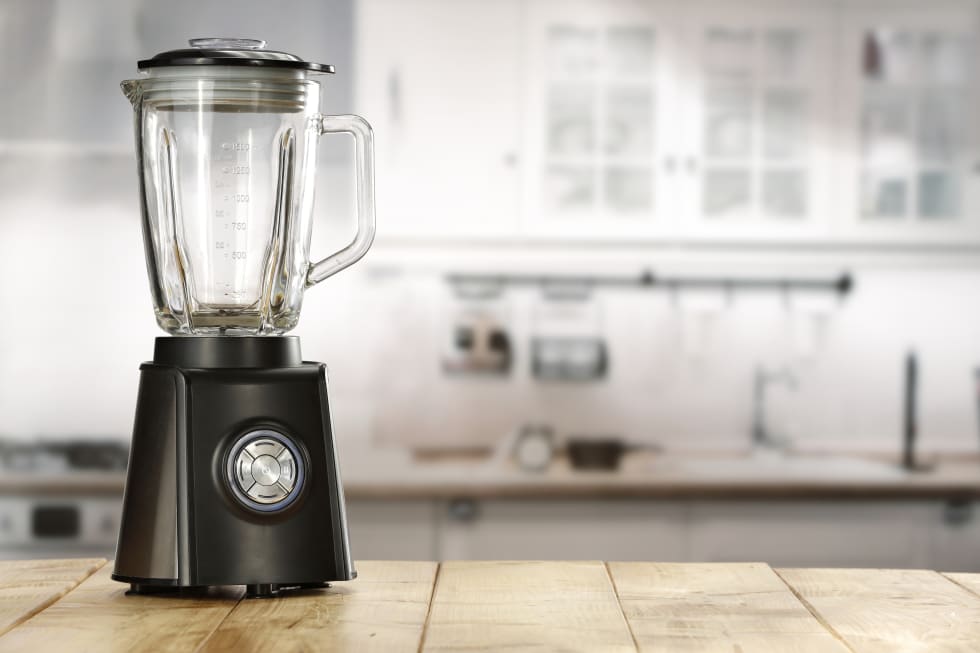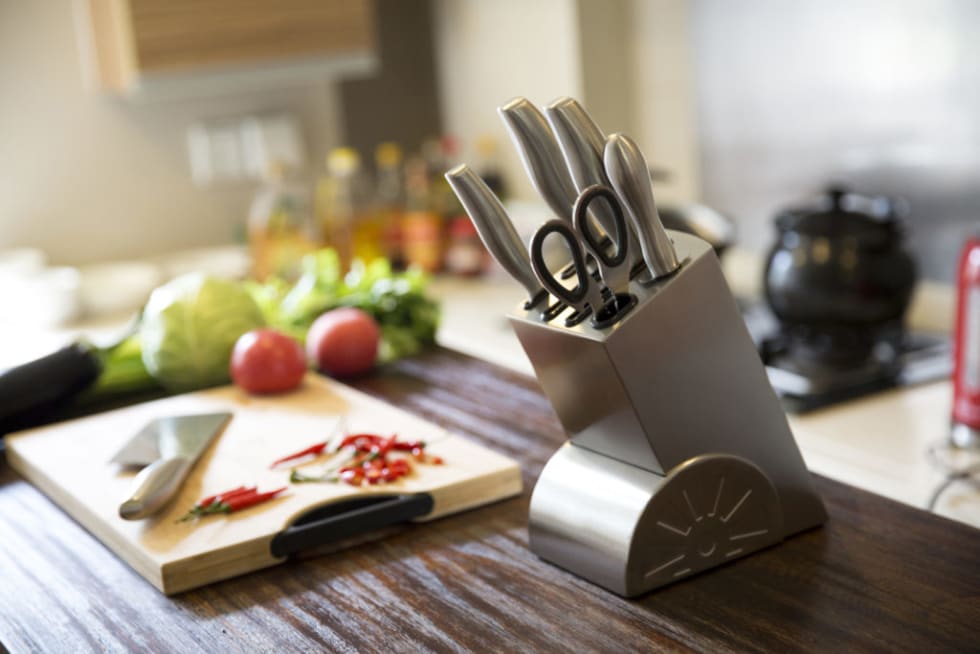South Bank at Quarry Trails
- 93 units available
- Studio • 1 bed • 2 bed • 3 bed
- Amenities
In unit laundry, Patio / balcony, Granite counters, Pet friendly, Stainless steel, Walk in closets + more

If you think your apartment is already clean, you're probably overlooking a few things. Fortunately, The NSF International Household Germ Study is here to remind us just how much we haven't cleaned — and the consequences.
Did you know that studies show more than 20% of foodborne illness outbreaks result from food that was consumed in the home? Also, hidden germs and grime look gross scattered across your kitchen. With the spread of Coronavirus, now seems like the perfect time to start sanitizing.
Roll up your sleeves and get out your cleaning supplies. Below are the 10 of the germiest things in your kitchen.

The NSF study says that yeast and mold thrive in areas like our water dispensers. Wipe down the visible surfaces with a clean sponge soaked in vinegar and water. You can also spray the mixture directly into the dispenser.
If you're confident about what you're doing, you can also take apart the water dispenser. Then, disinfect it from the inside out.
We hate to break it to you, but E. coli lives among us. Reach for those unexpecting rubber spatulas and get to work, giving them a good scrub.
Rinse them in hot water with a few tablespoons of chlorine per gallon of water. Vinegar and water will also work in a pinch.
But your rubber spatulas might be a lost cause. If they're still sticky after cleaning, throw them out. The synthetic or natural materials are often broken down by hot oils from your last apartment party.

Mixing up cocktails and smoothies in the blender is a perfect way to kick off the weekend. But you might also be adding a few extra ingredients like E. coli, Salmonella, yeast, and mold into your beverages.
Scrub out your blender with dish soap and hot water. Then, fill it with hot water and blend to get down into the gasket.
If possible, remove the gasket from the blender. Then, dilute vinegar and water for a thorough cleaning.
Are you using your fridge vegetable compartment as a compost bin? Although you can compost in an apartment, the veggie drawer isn't the place to store it. You're probably growing Salmonella, Listeria, yeast, and mold alongside your veggies.
The CDC recommends throwing out old food and emptying your drawers. Then, scrub them down with hot, soapy water. A solution of one tablespoon of liquid bleach and a gallon of water can also help sanitize your refrigerator.
Did you know ice dispensers can aggravate your allergies? The ice dispenser is a culprit for yeast and mold. That can make allergy sufferers sick.
Remove and dump out your ice. Then, get to work with four cups of distilled vinegar and water into the ice maker and dispenser lines.
After a five or ten minute soak, rinse, and repeat. The process can help break down yeast, mold, and lime that's building up a hidden germ factory.
Meatless Mondays may be the healthiest night of your week. Leaky meat containers and forgotten food are a recipe for E. coli and Salmonella.
Remove your drawer, throw out the old meat, mix up a solution of one part vinegar and two parts water, and get to work. Remember to also scrub down any shelves where meat may have sat for even a few minutes.

Getting your first knife block is a sign of serious adulting. However, it can also make you sick. Soap, water, and a mild bleach solution of a tablespoon of bleach to every gallon of water can help.
And if you're in the market for a new knife block, opt for a product that doesn't involve wood slots. They're likely holding onto bacteria and other unwelcome guests.
Food storage is key to a clean kitchen. It can make us feel like we're winning at the organized fridge game. But those food storage containers with rubber seals also lock in Salmonella, yeast, and mold.
A vinegar and water solution can help, but you may need new food storage containers. NSF certified products and systems can help solve your food storage problems.
Take a closer look at your can opener before you pop open that next can of beans. Tiny food particles can get caught in the blade. That turns your can opener into a germ factory.
You can scrub down handheld can openers with a toothbrush and dishwashing detergent to get the grooves clean. If possible, remove the blade from an electric can opener. Then, use a toothbrush dipped in vinegar to clean out the residue.
Make sure to dry your can opener to prevent rust. Also, be careful not to cut yourself on the blades.
There's a germ party going on in your fridge insulating seal. E. coli, Salmonella, yeast, and listeria may all be lingering around your fridge insulating seal.
The often-forgotten fridge-insulating seal takes some creativity to clean. Mix a half-teaspoon of dishwashing detergent in a cup of warm water. Then, scrub with a rag or soft toothbrush.
Treat mold on the seal with a solution of chlorine bleach and warm water.
Whether you're inspired or thoroughly disgusted, it's time to clean those forgotten, germiest things in your kitchen. Your place will never feel so clean. You'll get a good night's rest knowing you're germ-free.

In unit laundry, Patio / balcony, Granite counters, Pet friendly, Stainless steel, Walk in closets + more
In unit laundry, Granite counters, Hardwood floors, Dishwasher, Pet friendly, 24hr maintenance + more